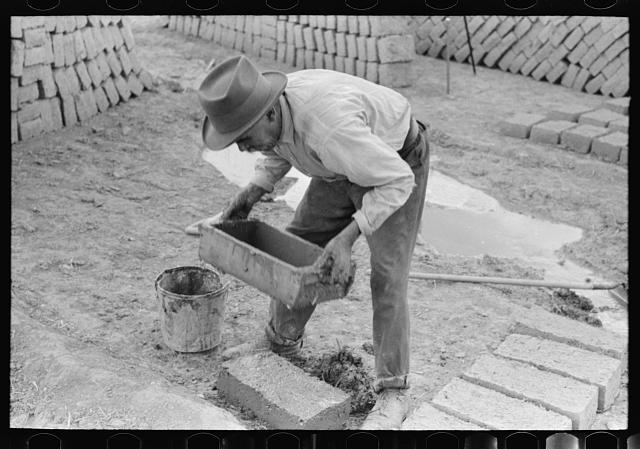From the Library of Congress image archive “Spanish-American removing form shaped adobe brick. The adobe brick is next dried by the sun. Chamisal, New Mexico. July 1940.”
This is exactly what I’ve been doing in my spare time for a few weeks now in preparation for an upcoming earth oven workshop. I’m on adobe #50–45 more to go!
And, from the same archive, an adobe chicken coop:
“Scene in the adobe brick chicken house of Mr. Bosley, Bosley reorganization unit, Baca County, Colorado.”









